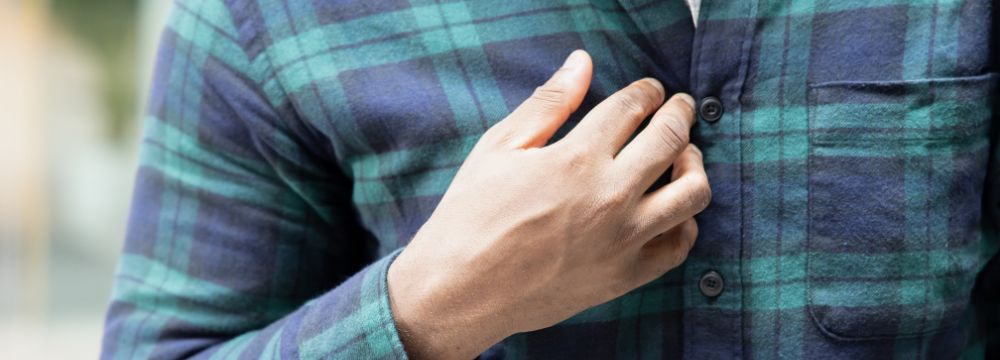Avoiding Reflux After the Gastric Sleeve

The gastric sleeve, also known as sleeve gastrectomy, is the most popular bariatric surgical procedure in the United States—and for good reason. It is a relatively straightforward procedure that removes approximately 75% of the stomach, creating restriction, reducing the amount of food a patient can eat, and significantly curtailing hunger due to the removal of the fundus (the portion of the stomach responsible for secreting ghrelin, the hunger hormone).
Looking at this information, it would seem that the sleeve is a perfect bariatric surgery. However, it does have a significant potential drawback: an increased risk of new or worsened gastroesophageal reflux disease (GERD).
Why Does Gastric Sleeve Surgery Cause Reflux?
To understand why GERD can worsen after a gastric sleeve, it helps to know how the stomach functions. In its unaltered state, the stomach is a low-pressure pouch with two valves:
- The lower esophageal sphincter (LES) separates the esophagus from the stomach.
- The pyloric valve – Regulates the outflow of partially digested food into the small intestine.
A large portion of the stomach is removed during the gastric sleeve, but these valves remain intact. However, the newly formed sleeve-shaped stomach is significantly smaller, which increases intra-gastric pressure. As a result, one of these valves has to give—and it’s usually the lower esophageal sphincter (LES). When this happens, gastric juices push into the esophagus, causing discomfort—otherwise known as reflux.
How Common Is Reflux After a Gastric Sleeve?
Several years ago, the incidence of reflux after a gastric sleeve was upwards of 20-30%. However, as patient selection has improved and surgical techniques have been refined, the reflux rate has dropped by approximately 50%.
One of the most significant breakthroughs in managing post-sleeve reflux has been the proactive identification and repair of hiatal hernias. These hernias can contribute to GERD, but fortunately, can be repaired during the sleeve procedure.
Reducing the Risk of Reflux After a Sleeve Gastrectomy
While some reflux may be unavoidable, you can take several steps to minimize your symptoms.
- Weight loss – As you lose weight, the intra-abdominal pressure caused by excess weight decreases, reducing the likelihood of reflux.
- Stop smoking – Smoking weakens the lower esophageal sphincter (LES), increasing your risk for reflux. It also raises surgical risks, making quitting essential before and after bariatric surgery.
- Change your eating habits:
- Avoid overeating, even with a smaller stomach.
- Eat earlier in the evening to allow digestion before bed.
- Sleep on your left side to help keep stomach contents from refluxing.
- Avoid trigger foods – Some foods increase acid production and weaken the LES. Common culprits include:
- Spicy foods
- Chocolate
- Tomatoes & acidic foods
- Certain gluten-based products
- Onions & garlic
- Keep a food journal – Tracking meals and symptoms can help identify personal reflux triggers.
Procedural Interventions for GERD After a Sleeve
A follow-up procedure may be necessary if significant reflux persists despite lifestyle changes.
- Roux-en-Y gastric bypass (RYGB) is a highly effective weight loss and anti-reflux procedure, particularly for patients with severe GERD. Unlike the gastric sleeve, which can increase intra-gastric pressure and worsen reflux, gastric bypass reroutes food away from the acid-producing portion of the stomach, significantly reducing acid exposure in the esophagus. By creating a small gastric pouch and bypassing the lower stomach and duodenum, RYGB eliminates the direct flow of gastric acid into the esophagus, providing substantial relief from chronic heartburn, regurgitation, and esophagitis. However, as with any surgical intervention, a thorough evaluation by a bariatric specialist is essential to determine if RYGB is the right choice.
- Transoral Incisionless Fundoplication (TIF) is a minimally invasive procedure designed to treat chronic gastroesophageal reflux disease (GERD) without needing external incisions. Unlike traditional fundoplication requiring laparoscopic incisions, TIF is performed entirely through the mouth using an endoscope-equipped device. The procedure recreates and reinforces the lower esophageal sphincter (LES) by folding and securing stomach tissue to form a tight anti-reflux valve. This helps prevent acid from backing up into the esophagus, reducing symptoms such as heartburn, regurgitation, and chronic cough. TIF is particularly beneficial for patients who don’t want long-term medication dependence or who are not candidates for more invasive surgeries like Nissen fundoplication.
You Don’t Have to Live with Reflux
If you experience acid reflux after bariatric surgery, we encourage you to schedule a consultation with Dr. Chang. Many patients are surprised by the straightforward treatment options to manage reflux effectively.
If reflux interferes with your quality of life after gastric sleeve surgery, don’t wait—contact our office today to explore your treatment options.

